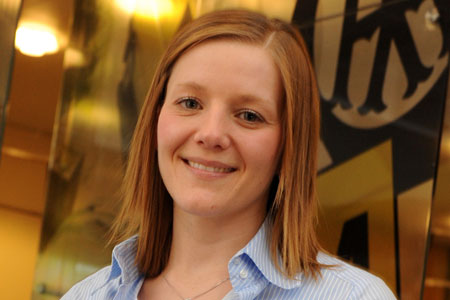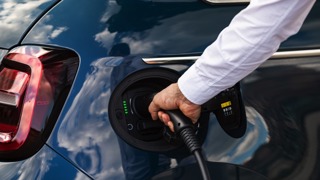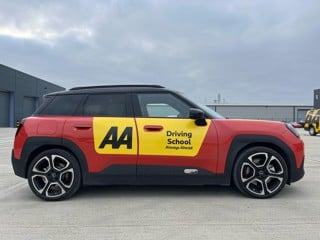A fleet of incredible diversity was how one Fleet News Awards judge described the AA operation.
If asked, most people would no doubt call to mind the company’s high-profile recovery vehicles, but fleet manager Sarah Dopson’s responsibilities are far more wide ranging.
Her fleet is the seventh biggest in the Fleet200. It numbers nearly 5,000 cars and more than 3,500 vans and trucks which she divides into four categories: roadside recovery, the sub-op fleet (including fuel assist and home assist vehicles), company cars and the driving schools.
Each operates its own fleet policy including different replacement cycles.
At one end of the scale are the AA Driving School and BSM, where cars are kept for an average of eight months and 17,500 miles.
The AA and Saga company cars, and the AA’s patrol motorbikes, are retained for a conventional three years/60,000 miles.
The AA’s vans operate on a 48-month/100,000-mile contract while its HGV fleet runs over 60 months, with each vehicle travelling around 75,000 miles a year.
It’s been an eventful 18 months for Dopson.
From 2010 to 2011, her total fleet size grew by more than 2,500 vehicles as she became responsible for the AA’s parent Acromas Holdings’ company vehicles as well as BSM after the acquisition at the end of January 2011.
The fleet personifies complexity, but the job is made easier by Dopson’s mature relationship with suppliers. She treats them “as part of my team”, which means an open book approach to costs.
“I don’t believe in a philosophy of going through the contract line-by-line. It’s give and take; you can’t just beat suppliers down,” she explains.
Dopson has been with the AA fleet for 11 years, originally as part of Centrica PLC. When the business was sold in 2004 she became fleet manager for cars and the AA Driving School.
In 2007, when the business merged with Saga, she took control of the commercial fleet.
Dopson’s team of six controls every aspect of the fleet. She does all the contract negotiations and manages the procurement plan.
Fleet News: When the AA acquired the BSM business it was losing money. How did you help turn it around?
Sarah Dopson: One of the major issues was the fleet. BSM had a vehicle contract which committed it to a fixed volume of vehicles annually, which was far more than it needed.
It also had a sales agency element to instructors and pupils which didn’t work, separate commissioning and de-commissioning centres, inflexible vehicle logistics and a national pool fleet.
Now we have key-to-key home delivery for cars, no volume commitment agreement, a centralised pool fleet and well-managed commissioning and decommissioning process.
We have also signed a three-year contact with GM for the BSM vehicle provision.
We have made significant savings within the first operating year on fleet and BSM was pleased to announce that after losing money for more than five years it is now financially stable, which gives us a firm base to grow the business.
FN: What are the top priorities when it comes to choosing an SMR partner?
SD: It’s certainly not all about price. Downtime, customer service and data support are all key as is a slick authorisation process.
These are all vital to keeping our fleet mobile – if we don’t stay mobile, we can’t serve our members and that’s a key measure of my job.
We also have additional support through BT Fleet, such as Ad Blue stocked on site and parking spaces for our vehicles; this flexibility is important.
Then the bottom line is price. We check every authorisation more than £500 on which parts are being changed and time taken to repair and this saves us a lot of money.
We also have an extended four-year warranty for major parts with our suppliers.
FN: You have a number of vehicles with Lombard Vehicle Management, which intends to withdraw from leasing. Would you consider extending van replacement while you sort out new funding arrangements?
SD: We are researching our options to understand what is best practice both operationally and financially.
Our commercial vehicle replacement programme has up to now been very regimented; we constantly review our replacement cycle. Four years is our optimal cycle before we start seeing increased SMR costs.
The additional SMR costs for extending vehicles will need to be included within the finance modelling.
There will be a minimal impact on the residual value as typically an AA van achieves well at auction as the perception of buyer is it has been well maintained and serviced – which they are.
FN: Unifying the AA and Saga car policies must have given you a headache. How did you go about this, and what is the company’s position on grey fleet cars?
SD: Saga historically had only perk cars and all other job requirement users took a cash alternative – it was the wrong way round.
We have now introduced a job requirement car entitlement for drivers achieving more than 5,000 business miles per annum.
We have also centralised the orders to one provider and linked this to the AA deal. This has removed the administration burden of managing individual leasing providers and orders.
You also benefit from the efficiencies of one provider and contractual negotiated rates.
All high business mileage users must have a company car. If someone uses their own car for work purposes, it must be a maximum of five years old, and they have to provide all the relevant documentation.
We are also looking at salary sacrifice, especially with our carers and grey fleet on the Saga side.
FN: Where does the environment figure in the decision-making process?
SD: We incentivise our drivers to choose greener cars; our average CO2 is around 136g/km.
Drivers pay an allowance each month for private use of their car, but we give them a 30% discount if they choose a car below 120g/km.
We also give them a 30% discount if they take a reallocation car, so we have very few on the fleet.
The AA strives to use the most environmentally-friendly vehicles on fleet. However, due to the nature of our business and the fact that we are a national fleet, we cannot support electric or hybrid vehicles for operational needs.
All AA fleet commercial vehicles are Euro 4 or 5, all our vehicles are fitted with a manufacturer speed limiter, and all our operational fleet is installed with a telematics unit.
We have also recently purchased two electric vans which operate out of Wimbledon providing breakdown assistance.
We also now have a national motorbike fleet which has reduced our requirement for large, less efficient vehicles operating in major conurbations.
FN: How do you tackle end of lease recharges?
SD: We used to have a problem with the AA Driving School vehicles because they would be returned in any sort of condition.
Now, anything above fair wear and tear is recharged back to the instructor. Our recharges have fallen from £430 per car to £180.
We also recharge our other company cars for any damage but only if it has not been reported. It goes to the line manager who decides whether to charge the driver or take it on the cost centre.
Dopson is a vital link in the chain that preserves the AA’s claim of being ‘the fourth emergency service’.
Average response time is around 40 minutes (point of call to the patrol arriving), which is helped by the call handler’s ability to identify the issue to ensure the right type of response vehicle is sent, while speed of repair is assisted by the on-board diagnostics system.
Every week she meets with regional managers, technical specialists and service and delivery personnel to identify issues with the fleet and consider new initiatives.
Dopson admits she loves the variance thrown up by operating such a diverse and complex fleet of vehicles but it’s certainly a major commitment. How does she manage it? “Long hours,” she replies.
Support comes from a variety of sources, including her peers in the Major Fleet Forum and the Fleet200.






















Login to comment
Comments
No comments have been made yet.